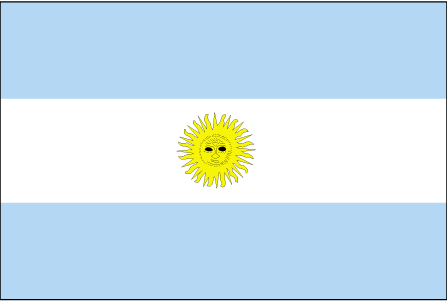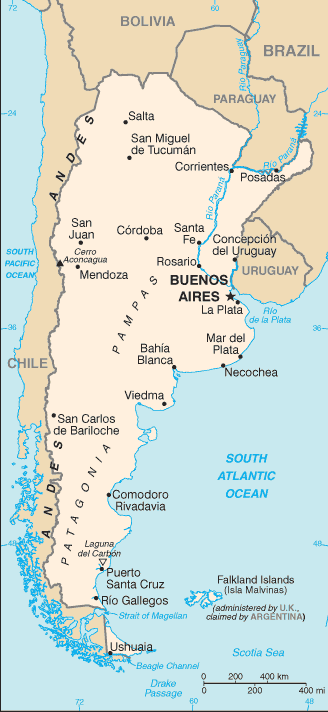
 I. Identification
I. Identification
1. The Issue
Dulce de Leche (Caramelised milk or Sweet Milk Candy) was declared by Argentina as a national product.
2. Description:
In April, 2003, Argentina declared Dulce de Leche (sweet milk candy), among other things, as a traditional Argentinean product. This started a debate with Uruguay as Uruguay has always produced this product as well. Argentina proclaimed that Dulce de Leche has always been a part of their culture and therefore they should be entitled to owning its name. However, Uruguay is worried that if this product is protected as Argentinean, they will not be able to produce it and export it thus losing the revenue that this product could bring to their economy.
Argentina proposed a seminar about a reflection of the culinary traditions and
the modifications to the eating habits in Argentina. Dulce de Leche, among others,
would be included as part of their traditional eating habits. Argentina is trying
to get UNESCO to recognize Dulce de Leche as part of their national patrimony.
This change can be reflected not only in their culture and identity but also
in their economy if UNESCO approves it.

Diego Manuel
www.diegomanuel.com.ar
After Argentina decided to declare Dulce de Leche as a national patrimony,
Uruguay decided that this case needed to be revised by higher authorities because
Uruguay has been producing and exporting Dulce de Leche as long as Argentina
has. Not only because of exports but because Dulce de Leche is also a part of
Uruguayan culture as well as Argentinean. Therefore Uruguay considers that this
product should be protected as a product that belongs to both sides of the Plata
River.
The Uruguayan parliament decided that they will take this issue to UNESCO for
this product to be protected for both countries so that both can benefit from
protection of their cultural history and from the economic benefits that the
exports of this product can have.
CNN published an article on April 3, 2003 about Argentina declaring Asado (Argentinean
style barbecue), empanada (meat pie), and dulce de leche as national patrimony
(El asado, la empanada y el dulce de leche, “patrimonio nacional argentino”.
Dulce de Leche, también uruguayo (Sweet Milk Candy is also Uruguayan) is another
article that was published in Portal GPI. This article argued that Dulce de
leche did not belong to Argentina only but that Uruguay has been producing it
as long as Argentina had.
Dulce de leche: no sólo tradición cultural (Sweet Milk Candy: not a cultural
tradition only) was published in Espectador.com. This article argued that Argentina’s
intention to declare dulce de leche as a national patrimony could have a dangerous
negative impact in the Uruguayan economy.
Another article was published in Mundo.com named La pelea por el dulce de leche
(The fight for Sweet Milk Candy). This article explains how Argentina is trying
to have UNESCO protect Dulce de Leche as an argentinean product and how Uruguay
is trying to stop this so that its production of Dulce de Leche is not affected
by this. According to this article, this is important not only for their cultural
identity but also for their economy as well.
There are other small articles, which mention how Dulce de Leche has started
to be very popular around the world even in the United States. One of the reasons
why Argentina decided to name it its own product seems to be that it realized
how important this recognition of Dulce de Leche around the world could be to
their economy.
3. Related Cases:
Argbeef: Cattle ranching in Argentina
Argrice:
Argentinean rice production
4. Author and Date: Kenia Mendoza July 5, 2004
5. Discourse and Status: Disagreement and in progress
Argentina proclaimed Dulce de Leche as a national product and is trying to
have it protected as such. Uruguay will take this issue to UNESCO to avoid this
product getting protected for Argentina as this could have negative impact in
the Uruguayan economy.
6. Forum and Scope: Argentina/Bilateral
7. Decision Breadth: It will be taken to UNESCO and a
decision will be made.
8. Legal Standing: There has not been a final legal decision
made on this product. Both countries are still producing and exporting it. A
final decision will be taken by UNESCO.
9. Geographic Locations
a. Geographic Domain: South America
b. Geographic Site: Argentina c. Geographic Impact: Argentina and Uruguay
10. Sub-National Factors: No
11. Type of Habitat: Temperate
Green Pastures in the Pampas in Argentina.
12. Type of Measure: Intellectual property
Tons of Dulce de Leche exported from Argentina. Results of these exports in
economy. According to the Ministry of Agriculture Dulce de Leche reached 105
thousand tons of production. This production equaled US$214 million. Last year
alone exports amounted 1900 tons which resulted in an income of US$ 2,7 millions
FOB.
According to forseen information the first semester of 2002 there were 1150
tons of Dulce de Leche exported which resulted in US$ 1,23 millions. Currently
the most important exporterts in Argentina are: San Ignacio, Andyson (La Paila),
Williner, Parmalat, Sancor, Ernesto Rodríguez, Manfrey y La Salamandra. The most important destiny of these exports was MERCOSUR with a 42% participation
in the market with Paraguay being the biggest importer. In the international
market, the statistics have been able to place this product only into two main
categories. In 2001 75% of sales were bottled product with net contect of less
than 5kg. and 25% in superior weight or of industrial use.
13. Direct v. Indirect Impacts: Direct
Direct impacts are related to the economic relation between exporting and importing
Dulce de Leche as an Argentinean product or allowing other countries such as
Uruguay to produce it and exported as well with the same name.
Indirect impact are directly related to the argentinean cousine and the history
behind it. Cousine is very important for argentinean history and therefore they
are trying to protect this history.
14. Relation of Trade Measure to Environmental Impact:
Directly Related to Product and process
15. Trade Product Identification:
MILK and CANDY
16. Economic Data:
![]()
 II. Legal
Clusters
II. Legal
Clusters
![]()
 III. Geographic Clusters
III. Geographic Clusters
![]()
![]() IV. Trade
Clusters
IV. Trade
Clusters
The media price of exportation (june, 2002) was about US$1,300/ton for exports
less than 5kg. andUS$920/ton. for those exports of industrial use.
Trade Issues
Exports from of Dulce de Leche from Argentina exceeded
US$15 million in 1998. There are 50 companies that produce dulce de leche in
Argentina; however, four of these control de trade market. Some of the importers
of dulce de leche include Russia, Israel, Syria, Holland, the US, and the European
Union.
The United States is becoming a very important importer as its Latino population
is growing and consuming more dulce de leche. This is one of the reasons why
dulce de leche is becoming such an important trade issue.
The United States is not only growing as an important importer of dulce de leche
from Argentina but there are some ice cream brands such as Hager Daz in the
US who are already producing dulce de leche flavored ice cream which shows the
importance this product in gaining in the US market.
Another source indicates that trade of candy is a very important issue in the
candy market in the US. Taking into account in fast growing Hispanic population,
this is an issue that needs to be addressed. This is one of the reasons Uruguay
is trying to protect their production of dulce de leche. Once this product is
protected for Argentina, Uruguay will lose a huge portion of its exports.
17. Impact of Trade Restriction:
Trade restriction due to protection of Dulce de Leche in favor of Argentina could have a very negative impact in the Uruguayan economy since they have been producing and exporting this product as long as Argentina has. On the other hand, it might have a very positive impact in the argentinean economy as the market for Dulce de Leche is growing very rapidly.
18. Industry Sector: Milk Market and Candy Market
19. Exporters and Importers:
EXPORTERS: Argentina and Uruguay are the main exporters of this product.
IMPORTERS: Countries that import this product include Russia, Israel, Syria, Holland, the United States, and the European Union. Russia and Paraguay are the most important importers of Dulce de leche.
![]()
 V. Environment Clusters
V. Environment Clusters
20. Environmental Problem Type: Culture
There are not many environmental issues with dulce de leche. The only thing
that is going around having to do with dulce de leche and the environment is the
growth of eurotium chevalieri which is a xerophilic mold that could be a very
serious problem in this type of product with high sugar content.
Another
issue of the production of dulce de leche is that it requires a lot of expensive
scarce fluid milk. This might not be related directly to the environment per se
but has to do with the scarce resources that there exists.
Milk's quality: "Cattle farmers in Argentina have not only mastered the art
of breeding cattle for premium meat but are also experts in milk production.
These cows graze the green pastures in the vast pampas and as a consequence
their milk is rich in Conjugated Linoleic Acid (or CLA), and Omega-3 fatty
acids. Animals raised in these high quality pastures yield milk of excellent
taste and quality."
21. Name, Type, and Diversity of Species
Name: Dulce de Leche (Sweet Milk Candy)
Type: Milk
Diversity: Argentinean, Uruguayan (Main ones) but other Latin American Countries produce it also but with different names and slight differences. It is also known as Manjar Blanco in Peru for instance.
22. Resource Impact and Effect: Argentina possesses very rich resources for this product as it has a history of cattle farmer experts thus producing enough milk to continue producing and exporting this product. Therefore, the impact of effect that there might be is more related to its economy that to its resources.
23. Urgency and Lifetime: Low/10-2 years
Urgency: low
Lifetime: unknown
24. Substitutes: Manjar Blanco which is a very similar product but has a different texture and color but a similar taste. There are also a few differences on how it is prepared.
![]()
 VI. Other Factors
VI. Other Factors
25. Culture: Yes (Argentinean Cousine and Argentinean history)
26. Trans-Boundary Issues: Yes
27. Rights: No
28. Relevant Literature:
“Patrimonio Nacional Argentino". CNN on line. April, 2203
"Sweet Milk Candy is also Uruguayan" Portal GPI
"Sweet Milk Candy: not only cultural tradition" Elespectador.com
"The fight for Sweet Milk Candy" Mundo.com
"Patrimonio Cultural, Alimentario y Gastronómico" ArgentinaTuristica.com
Tango, asado, dulce de leche: culture of rioplata, not exclusively from Argentina. Expectador.com
La peña: ¿Argentinean Patrimony? Cultura Rio Negro on line April, 2003
A country with Diversity. La Nacion on line
Un homenaje a la empanada, el asado y el dulce de leche. Los Andes on line, April, 2003.
8/2004